Lamiaceae
Also known as the Mint family.
Herbs with square stems, usually aromatic.
- Flowers perfect, bilaterally symmetrical. Sepals 5, fused. Petals 5, fused, 2-lobed upper lip and 3-lobed lower lip. Stamens 2 or 4, fused to petal. Pistil compound, ovary superior, carpels 2, but deeply lobed.
- Fruit 4 nutlets.
- Leaves simple, opposite or whorled.
- About 200 genera, 3200 species, cosmopolitan
Most Lamiaceae contain fragrant oils, and many are used as herbs or flavorings, including Mentha (mint), Salvia (sage), Rosmarinus (rosemary),Thymus (thyme), Marrubium (horehound), Nepeta (catnip), Satureja (savoury), Origanum (oregano), Majorana (sweet marjoram), Ocimum (sweet basil).
Vegetative Features
| There are some features that the members of this family share that help you to identify them even if they are not flowering: square stems, opposite leaves. The picture below of Coleus demonstrates the opposite leaf arrangement. Leaves are in pairs along the stem. |
 Coleus Plant |
| A square stem is another diagnostic feature of this family. |
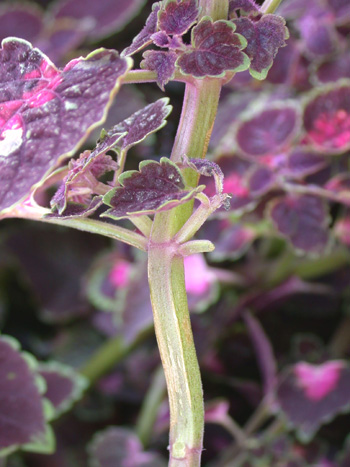 Coleus, square stem |
| Another example of the square stem found in this family. |
 Square stem |
| Salvia (sage). There are many different species of sage. Some used for spice. The one pictured here is a common ornamental plant. |
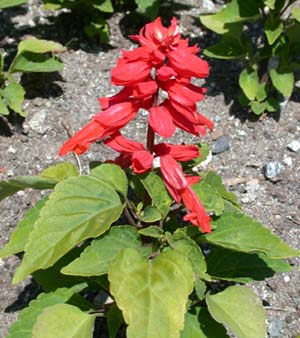 Sage Plant |
| Close up of the flowers of the sage plant. |
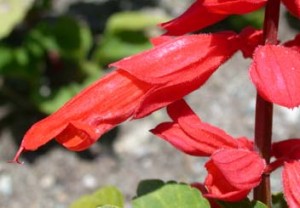 Sage Flower |
| A longitudinal section through a flower. |
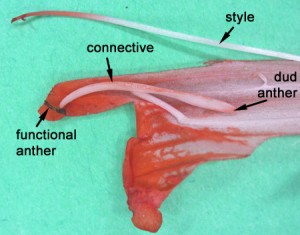 Sage Flower, Longitudinal Section |
| A look at an isolated stamen. |
 Isolated Stamen of the Sage Flower |
| Nutlets: |
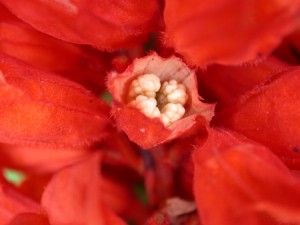 View of Nutlets |
Other Members of Lamiaceae
| Mentha – spearmint. |
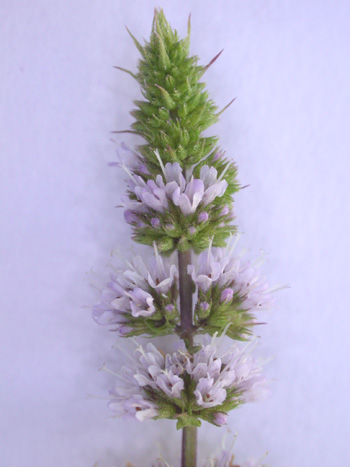 Spearmint |
| If you look closely you can see some nutlets! |
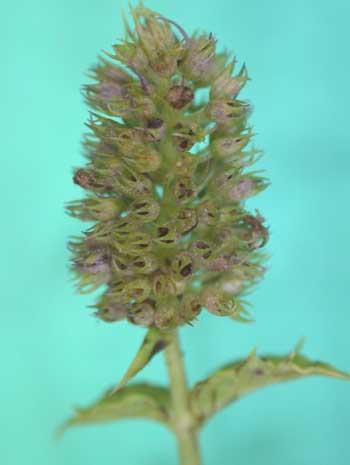 Close Up, Illustrating Nutlets |
| Stachys – lamb’s ears . This plant has many fine trichomes which are soft to the touch (hence the common name). |
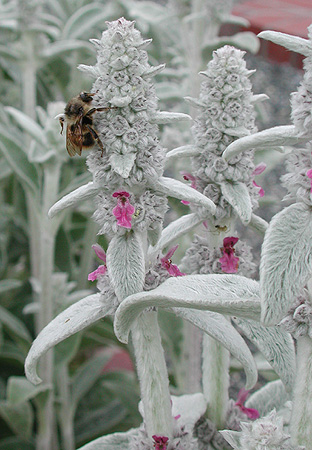 Stachys |
| Another photo of lamb’s ear. |
 Stachys Inflorescence |
| Ajuga – bugleweed. Ajuga has been used in folk medicine for healing skin wounds. Tannins (astringents) are found in the leaves. the plant has also been used as a source of black dye. It also makes a very handsome ground cover. Gardeners often use it as a border plant. |
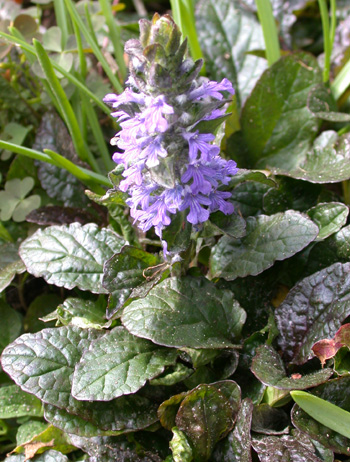 Ajuga |
| A good look at a flower! The two upper petals are very small. the lower petal is lobed. |
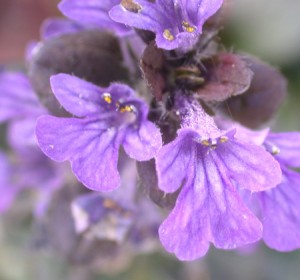 Ajuga, Close up |
| Lavendula – lavender. This plant has a long history of use as a fragrance.The flowers are sold whole or as an oil. It is most famous for its calming effect. It has also been recommended by herbalists to relieve intestinal gas. |
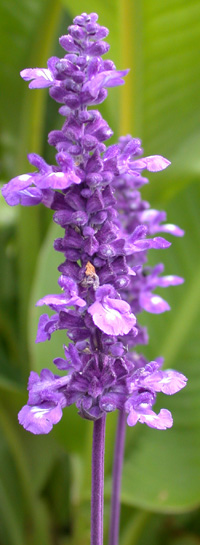 Lavender Plant |
| Thymus – thyme (with friend). Thyme has had a long history of medicinal use as cough suppresant. It is a common herb used in a wide variety of dishes. |
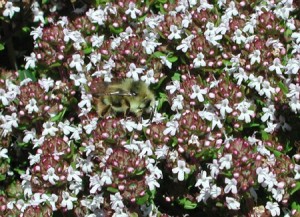 Thyme Plant |
| Prunella – heal-all. It is somewhat of a mystery how this plant earned its common name. There is little evidence that suggests it played a major role as a medicine. It was used as an astringent and in a throat gargle. |
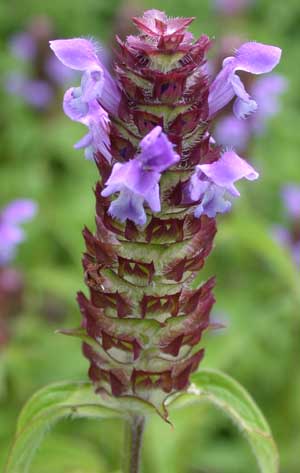 Prunella |
| Rosmarinus officinalis – Rosemary. A favourite culinary herb, Rosemary has many uses. Diluted Rosemary oil is a taken to relieve intestinal gas. In ancient Greece it was believed to improve memory so students wore it in their hair while studying. It became a symbol of remembrance and sprigs of rosemary were often placed with the dead to ensure that the dead would not be forgotten. |
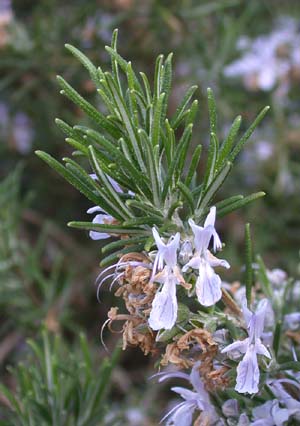 Rosmarinus officinalis |
Back to Lab 4


















